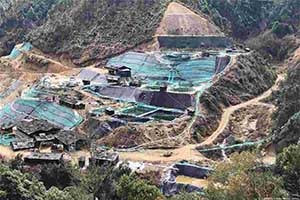
Posted on : Tuesday , 4th November 2025

Significant mineral concentrations found in Kenya's coastline formations have led to the country's potential as a rare earth powerhouse. The East African country is strategically positioned in talks of global supply chains due to its significant reserves of Kenyan rare-earth minerals, which are necessary for advanced manufacturing processes, renewable energy systems, and modern technology. According to recent geological estimations, Kenya is home to over 40 million tonnes of rare earth-bearing ore, with average concentrations of about 5% total rare earth oxide. Significant niobium reserves, possibly over 680 million kilogrammes, are also present in these deposits, giving Kenya a dual-mineral advantage over single-element-focused projects abroad.
The mineral composition consists of both heavy and light rare earth elements, with cerium, lanthanum, neodymium, and praseodymium being particularly abundant. Heavy rare earth elements like dysprosium and terbium command premium prices because of supply limits and specialised applications in permanent magnets and defence technology, while light rare earth elements usually command lower processing complexity and costs. Since different rare earth elements serve different market segments with variable demand patterns and price volatility, it becomes imperative to understand this composition in order to ensure accurate value. The critical minerals transition also emphasises how much demand there is for these resources worldwide.
The largest concentration of rare earths in Kenya is found on Mrima Hill in Kwale County, which is around 50 kilometres from Mombasa port facilities. The majority of Kenya's projected rare earth richness is found in this forested height, which attracts worldwide mining interest and geopolitical attention. Beyond its potential for minerals, the location has historical significance. Prior exploration endeavours involved licensing agreements with Cortec Mining Kenya; however, these permits were revoked in 2013, underscoring the intricate regulatory environment pertaining to mining development in Kenya. As the nation improves its mining governance framework, current exploration rights and partnership arrangements are changing.
Geological surveys have found encouraging rare earth markers in Kenya's varied formations outside of Mrima Hill. Different levels of rare earth mineralisation potential can be found in alkaline intrusion sites, inland crystalline basement complexes, and coastal sedimentary deposits. The aforementioned exploration locations indicate that Kenya's potential for rare-earth minerals goes beyond single-site operations, possibly facilitating several mining endeavours or phased development strategies. However, in order to show commercial viability over these wider target areas, comprehensive resource definition drilling is still required.
Similar rare earth-bearing carbonatite complexes are found throughout the region, according to comparative studies with surrounding East African geological formations; nevertheless, Kenya's coastal access and pre-existing infrastructure offer competitive advantages for export logistics and development timing.
Expogroup is a full service exhibition organiser with over eighteen years experience in International.Trade Exhibitions and Events. Our current portfolio includes 20 annual exhibitions from a diverse range of industries being held across the Middle East & Africa.
EXPOGROUP © 1996 - 2025 | Privacy PolicyJoin our mailing list and receive latest news and advice from us in our monthly Newsletter
Yes, I would like to receive Expogroup E-newsletters
